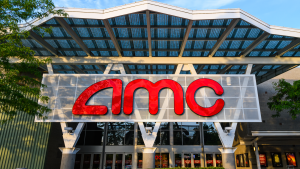The S&P SmallCap 600 is down 24.0% year-t0-date through Sep. 30. That’s 77 basis points less than the S&P 500. So, looking for small-cap stocks to buy is not necessarily a bad idea.
If anything, 2022’s bear market shows us that there are times when the markets can’t shelter even the largest companies.
The S&P Composite 1500 combines the S&P 500, S&P MidCap 400, and the S&P SmallCap 600. Together, they capture approximately 90% of the U.S. market. The S&P SmallCap 600 represents about 2% of the U.S. market.
If you’re a conservative investor, I suggest you follow this guideline with your entire portfolio. If you only have $10,000 to invest, I’d keep about $200 in small-cap stocks. The iShare Core S&P Small-Cap ETF (NYSEARCA:IJR) is an excellent choice for the $200. It tracks the performance of the S&P SmallCap 600 and charges just 0.06% or 12 cents on your $200.
However, for those more aggressive, here are seven small-cap stocks to buy from IJR that tap into a hidden bull market that might be on the horizon. My selections are based on their latest trailing 12-month EBITDA (earnings before interest, taxes, depreciation and amortization) relative to the other companies in the index.
While some these stocks may not qualify as small-cap by standard definition, they are all top components of the IJR ETF. That’s why I’ve chosen them as the best small-cap stocks to buy now.
| AMCX | AMC Networks | $21.18 |
| ASO | Academy Sports and Outdoors | $44.13 |
| UNFI | United Natural Foods | $35.90 |
| PBF | PBF Energy | $36.52 |
| COOP | Mr. Cooper Group | $41.69 |
| AMN | AMN Healthcare | $111.17 |
| OI | O-I Glass | $13.29 |
AMC Networks (AMCX)

AMC Networks (NASDAQ:AMCX) produces and distributes television and film content through its brands such as AMC, BBC America, Sundance TV, and IFC. In addition to its content appearing on its own cable channels, it also streams content through AMC+ and is one of the top small-cap stocks to buy.
The entertainment company’s TTM EBITDA is $674 million through the second quarter ended June 30. That’s 22% of its TTM revenue of $3.06 billion. Its second-quarter results highlight a 46% year-over-year increase in streaming subscribers to 10.8 million. The growth was driven by the launch of the AMC+ premium streaming bundle in Spain. The company’s shows received 12 Emmy nominations during the quarter, with its Breaking Bad prequel, Better Call Saul, bringing home seven nominations.
AMC Networks announced on Aug. 5 that it had appointed COO Christina Space as its permanent CEO. Space, who replaced interim CEO Matt Blank (Blank joined the company in August 2021 to temporarily head the company after CEO Josh Sapan stepped down after 26 years in the top job) will be responsible for continuing to grow its direct-to-consumer streaming businesses.
The company’s enterprise value of $3.1 billion, 1.83x its EBITDA, is considerably less than its five-year average of 2.85.
Academy Sports and Outdoors (ASO)

Academy Sports and Outdoors (NASDAQ:ASO) is one of my favorite small-cap stocks. I’ve recommended it on several occasions in recent weeks. Its TTM EBITDA is $982.6 million on $6.56 billion, good for a 15% margin.
On Sept. 27, the company opened a store in Lexington, Kentucky. It is Academy’s first store in the city and its sixth in Kentucky. In 2022, the sports and outdoors retailer has opened five stores. It plans to open another four by the end of the year.
Earlier in September, the company reiterated its full-year revenue of $6.53 billion at the midpoint of its guidance with adjusted earnings per share of $6.90. The retailer finished the second quarter with 261 stores open. Over the next five years, it plans to open 80 to 100 stores.
Academy’s enterprise value is 4.89x its EBITDA. That’s lower than any time since it went public in October 2020 at $13 a share. Its former private equity owner, KKR & Co., no longer owns shares in the company.
ASO stock is up 224% since going public two years ago.
United Natural Foods (UNFI)

United Natural Foods (NYSE:UNFI) CEO Douglas Alexander Jr. recently bought 2,932 shares of its stock on the open market for nearly $100,000, bringing his total to 56,763. It’s another one of the top stocks I’m including on the top small-cap stocks to buy.
There’s only one reason a CEO buys shares on the open market. They believe that the stock is undervalued. Down almost 30% YTD, its shares trade at 0.07x sales, about one-eighth the multiple where it traded during the early 2010s.
United Natural Foods is the largest publicly traded wholesale distributor of healthier food options in the U.S. and Canada.
On Sept. 26, it announced it would introduce robotics and automation software from Symbiotic Inc. powered by artificial intelligence (AI). The software will be implemented at the company’s distribution centers over the next four years. The company believes Symbiotic’s AI-powered robotics and software platform will significantly improve its supply chain and operational efficiency.
In fiscal 2022, United Natural’s revenue increased by 7.3% to $28.9 billion, while its adjusted EBITDA increased by 7.7% to $829 million. A highlight of the fourth quarter ended July 31 was its doubling free cash flow to $269 million from $133 million a year earlier.
It continues to strengthen its balance sheet, reducing its net leverage, defined as net debt divided by EBITDA, whilenet leverage, defined as net debt divided by EBITDA — while taking market share.
PBF Energy (PBF)

PBF Energy (NYSE:PBF) stock is up more than 150% YTD. InvestorPlace contributor Louis Navellier recently recommended that investors buy the stock before the fourth quarter because it reduced its net debt by 66% in Q2 2022.
I was unfamiliar with the oil refiner until it appeared on my stock screen. It owns six refineries in five states capable of processing one million barrels per day. In July, it announced revenue of $14.08 billion, more than double a year earlier. Its adjusted EBITDA was $1.92 billion, a complete reversal from $2.1 million in Q2 2021. It expects the second half of 2022 to remain strong despite the global economic uncertainty. For all of 2022, it expects to process between 895,000 and 955,000 barrels per day, up from 835,000 in 2021.
As part of its Q2 2022 press release, it announced that it would acquire all of the outstanding common units of PBF Logistics (NYSE:PBFX) that it doesn’t already own. It will pay $9.25 in cash plus issue 0.270 PBF Energy shares for each share of PBFX. Before the announcement, it held 47.7% of the units.
Its enterprise value of $6.09 billion is 3.2x its 2022 adjusted EBITDA. That’s considerably less than its five-year average of 6.2x.
Mr. Cooper Group (COOP)

Mr. Cooper Group (NASDAQ:COOP) changed its name from Nationstar Mortgage in Aug. 2017 to put behind it the company’s reputation for mortgage malpractice and poor customer service. It’s another one of the top stocks I’m including on the top small-cap stocks to buy.
In 2020, it was forced by the Consumer Financial Protection Bureau to pay customers $85 million in restitution for its actions and pay another $6 million in fees and penalties. Class action lawsuits still hang over it.
So, why do I like it? The company, which is one of the largest home loan servicers in the U.S., is doing well and is likely to continue doing well under the current rising interest-rate environment. Vice Chairman and President Chris Marshall acknowledged this fact in its Q2 2022 press release, acknowledging that its quarterly profit was higher due to a rise in interest rates.
In the second quarter, its income from continuing operations before tax was $205 million, 177% lower than a year earlier. Its income was lower due to the sale of its Title busines, which resulted in a $487 million gain in Q2 2021. Excluding that gain, its income from continuing operations before tax increased 156% YOY.
The average rating of the eight analysts that cover its stock is Overweight with a $56.14 average target price, 39% higher than its current value.
AMN Healthcare (AMN)

AMN Healthcare (NYSE:AMN) is probably the country’s largest provider of nursing staffing services for hospitals and other healthcare facilities. It’s come a long way since it began focusing on Managed Services Programs (MSPs). These programs handle a client’s entire recruitment acquisition and development lifecycle, removing the client’s burden of staffing.
AMN has more than 500 MSP clients spending more than $3.1 billion in gross dollars annually on AMN-provided solutions. Its top 30 MSPs use more than seven of the company’s staffing solutions.
The company estimates that the U.S. annual healthcare staffing market is approximately $40 billion. AMN captures about 10% of this market. It has plenty of room to grow.
In the latest quarter, it generated $1.43 billion in revenue, 66% higher than Q2 2021. Its adjusted earnings per share (EPS) were $3.31, 102% higher than a year earlier. Down 13% YTD, AMN trades at a low 9.5x its earnings estimate of $11.18 a share in 2022.
O-I Glass (OI)
Once upon a time, O-I Glass (NYSE:OI) traded above $25. As recently as June 2021, it nearly hit $20. It’s another one of the top stocks I’m including on the top small-cap stocks to buy.
The glass manufacturer’s history dates to 1903 with the Owens Bottle Machine Company. In 1919, it became the Owens Bottle Company. By 1929, it merged with the Illinois Glass Company to become the Owens-Illinois Glass Co. In December 2019, the company became the O-I Glass Co. as part of its corporate modernization.
The Ohio-based company raised its Q3 2022 guidance in mid-September. It now expects its EPS to be at the high end of its range — $0.55 to $0.60 — or even exceed it. For all of 2022, it expects to earn at least $2.18 a share at the midpoint of its guidance, five cents higher than its previous guidance.
I’m a free cash flow nut, so the fact it raised its adjusted free cash flow outlook for the year to $400 million, or possibly more, is a very good sign. Based on a market capitalization of $2.06 billion, it has a free cash flow yield of 19.8%. I consider anything above 8% to be in value territory. O-I Glass has 70 factories in 19 countries producing glass for more than 6,000 customers worldwide. Sustainable, glass isn’t going away anytime soon.
On the date of publication, Will Ashworth did not have (either directly or indirectly) any positions in the securities mentioned in this article. The opinions expressed in this article are those of the writer, subject to the InvestorPlace.com Publishing Guidelines.
